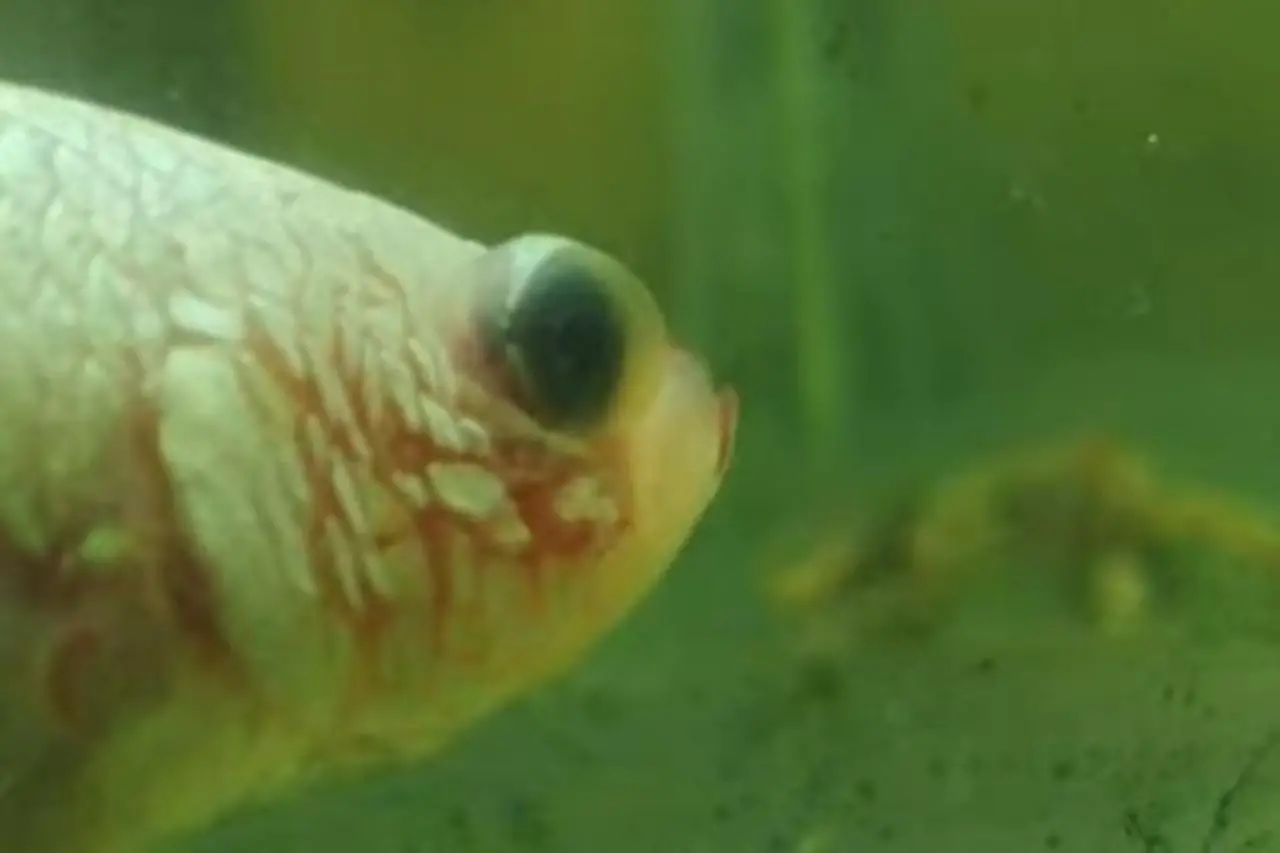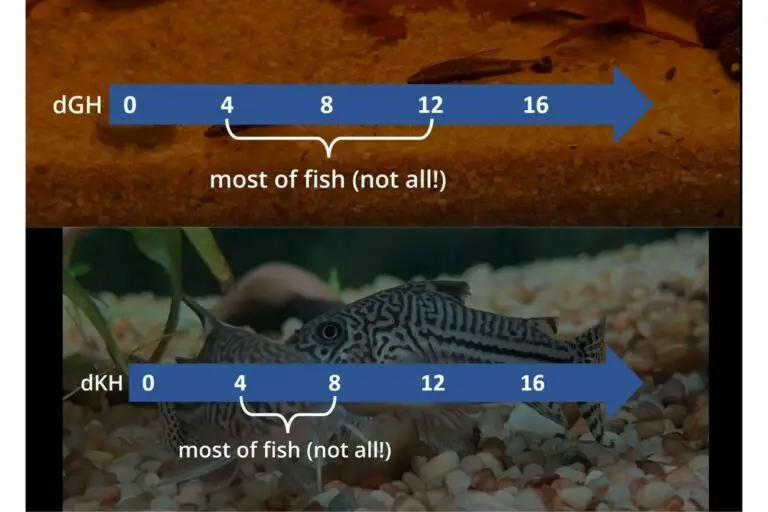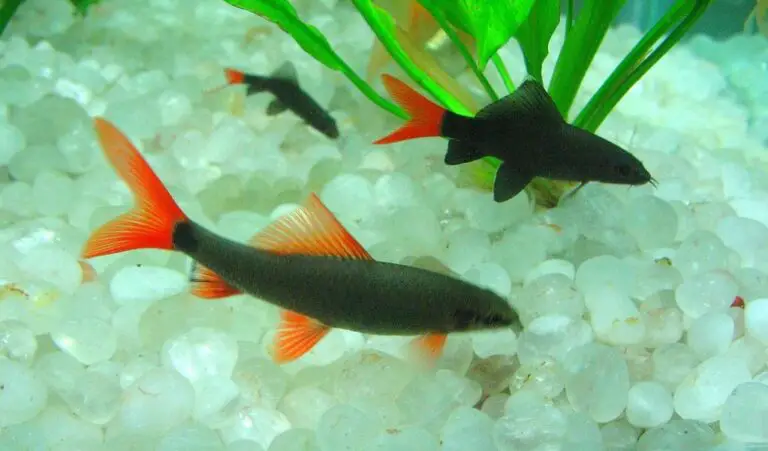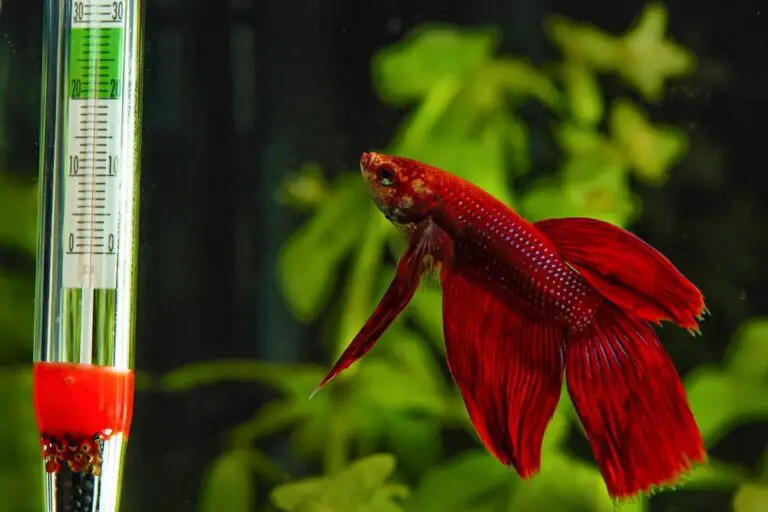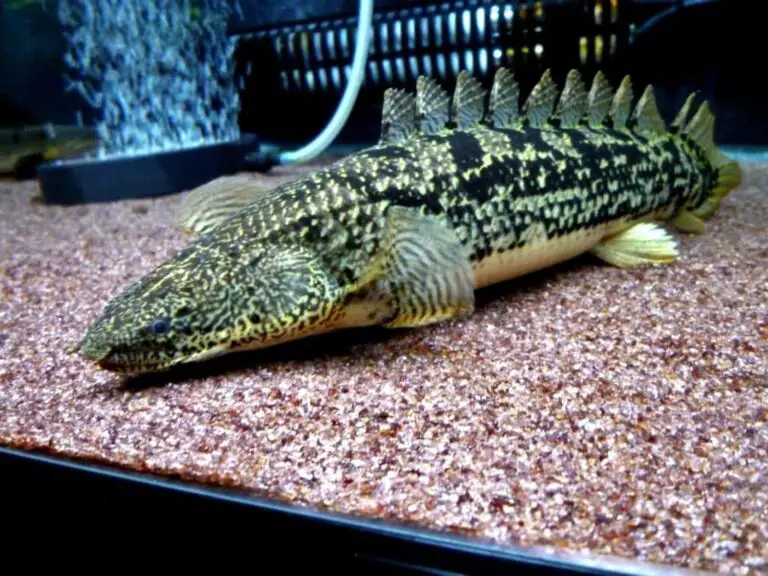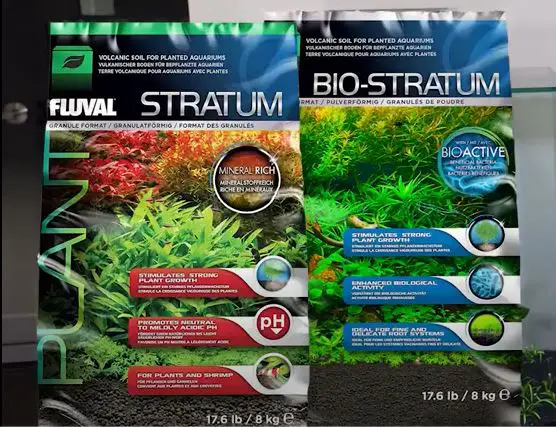How to Treat Popeye in Fish?
Popeye in fish is a condition caused by a deficiency of vitamin E. To treat Popeye, the water quality must be improved to reduce stress on the fish. The pH, alkalinity and temperature should all be monitored and maintained at optimal levels for the species of fish affected. Additionally, you should feed your fish foods that are rich in vitamins A, C and E such as spirulina flakes or other enriched prepared foods.
You can also provide a vitamin supplement specifically designed for aquarium use to ensure adequate amounts of these vitamins are present in their diet. If possible, it may be beneficial to separate any infected individuals from the rest of the tank inhabitants until they make a full recovery as well as perform regular partial water changes with dechlorinated water using an aquarium filter system.
- Determine the cause: Popeye is usually caused by a bacterial infection or physical injury. If your fish has been in contact with other sick fish, it could be due to a bacterial infection. If there are no signs of any other ill fish, then check for sharp objects or debris that may have injured your fish’s eye.
- Isolate the affected fish: To prevent further spread of any possible infections, isolate the affected fish from its tankmates and move it into a separate quarantine tank. Make sure to also provide aeration and filtration in this new environment so that the water quality is maintained at optimal levels for healing
- Treat with antibiotics or eyedrops: Depending on what you believe is causing your fishes popeye, you can treat it either with antibiotics or special eyedrop medications available at pet stores. For treating bacterial infections, use an antibiotic formulated specifically for aquariums such as Maracyn-Two and follow instructions carefully as per package directions. For physical injuries, apply topical antiseptic solution like Melafix to help heal wounds faster and reduce inflammation around the eyes of your fish.
- Monitor progress & adjust medication dose: After beginning treatment, monitor closely how well your fishes condition is improving over time; if necessary make adjustments to dosage depending on how quickly their symptoms improve/worsen over time. Additionally, you should perform regular partial water changes (25% once every week) during treatment periods which will help maintain good water quality while also aiding recovery process.

Credit: www.youtube.com
What is the Best Treatment for Popeye in Fish?
Popeye is a common condition among fish that causes them to have bulging eyes and can be caused by everything from poor water quality, to bacterial or viral infections. The best treatment for Popeye in fish will depend on the cause of the condition. If it is due to a bacterial or viral infection, then antibiotics are often recommended as they can help reduce inflammation and restore eye health.
Other treatments may include increased water changes and improved nutrition, as well as adding vitamin supplements such as Vitamin C into their diet. In some cases surgery may also be necessary if the damage has become too severe. Ultimately, consulting with an experienced veterinarian should provide you with the most effective treatment plan for your particular case of Popeye in fish.
What Antibiotic Treats Popeye in Fish?
When it comes to treating Popeye in fish, the antibiotic of choice is usually an injectable form of tetracycline. This type of antibiotic works by inhibiting bacterial growth and can be administered directly into the affected area, making it very effective in treating Popeye. Additionally, this antibiotic has a wide safety margin which makes it suitable for use with most species of fish.
It’s important to note that when using any medication, proper dosing and administration are essential for successful treatment. A veterinarian should always be consulted prior to administering any medications or treatments as doses may vary depending on the size and health condition of your fish. As with all antibiotics, follow-up care is recommended after treatment; if there are signs that infection remains present then further antibiotics may need to be prescribed by a vet.
Ultimately, providing prompt attention and appropriate treatment will help ensure a positive outcome for your beloved aquatic companion!
How Much Epsom Salt to Treat Popeye?
When treating Popeye, the disease caused by an iron deficiency in fish, it is important to use the right amount of Epsom salt. The recommended dose for Popeye treatment is 1 tablespoon per 10 gallons of water. This should be dissolved into a small container of aquarium water or dechlorinated tap water before being added to the tank.
If possible, do not add any other medications such as antibiotics at this time. Epsom salt can be used up to twice a week until signs of improvement are seen and then decreased as needed. It is also wise to check with your local aquarium store for further instructions on how much Epsom salt you should add depending on your individual tank setup and type of fish present in order to make sure that you are giving them the best care possible!
How Do You Treat Popeye in a Fish Pond?
When it comes to treating Popeye in a fish pond, the main thing you need to be aware of is that Popeye (also known as exophthalmia) is an eye disease caused by poor water quality. To ensure your pond remains healthy and free from this infection, start by testing your water parameters regularly. This will help identify any potential issues early on and allow you to take corrective action before they become serious problems.
Additionally, keep the environment clean by performing regular maintenance such as removing dead leaves or other debris that can lead to bacterial buildup. Lastly, make sure there are plenty of hiding places for your fish so they feel secure and comfortable in their environment; this will also reduce stress levels which can cause further health complications for them. With these steps taken care of, you should have no problem keeping Popeye at bay!
“Popeye” in Pet Fish
Can Popeye Kill Fish
Popeye is a cartoon character renowned for his superhuman strength, which he gains after eating cans of spinach. While Popeye’s strength may be exaggerated in the cartoons, it doesn’t extend to being able to kill fish with his bare hands (or arms). In fact, Popeye has never been depicted as killing any type of animal.
Antibiotics for Popeye in Fish
Antibiotics can be used to treat Popeye in fish, which is an infectious disease caused by a bacteria. Common symptoms of this condition include bulging eyes and loss of appetite. Treatment with antibiotics may take several weeks and should only be done under the supervision of a qualified veterinarian.
In addition to antibiotics, other treatments such as adjusting water conditions or quarantine may also be necessary for successful treatment.
Popeye in Fish Treatment With Epsom Salt
Popeye in fish is a common condition caused by improper water conditions. It presents itself as bulging eyes and can be treated with Epsom Salt, which helps to reduce swelling and improve the overall health of the fish. Adding two tablespoons of Epsom Salt per ten gallons of water will help to keep Popeye at bay while maintaining healthy water parameters for your fish.
What Causes Popeye in Fish
Popeye, otherwise known as exophthalmia, is a condition that causes a fish’s eyes to bulge out from its head. It can be caused by a variety of factors such as poor water quality, physical trauma, bacterial infections and nutritional deficiencies. Poor water quality can cause the development of Popeye due to an increase in ammonia levels or incorrect pH balance within the tank.
Additionally, physical trauma may occur if the fish is damaged during transport or netting and this can lead to edema (swelling) around the eye area causing Popeye. Bacterial infections are another common cause which results from weakened immunity due to stress or unclean living conditions. Lastly, inadequate nutrition caused by an unbalanced diet lacking essential vitamins and minerals may also trigger Popeye among fish species.
Is Popeye Fish Disease Contagious
Popeye Fish Disease, also known as exophthalmia or “pop eye”, is not contagious. It is an environmental disease caused by poor water quality and overcrowding that can affect many species of fish. Symptoms include bulging eyes, which may be accompanied by frayed fins and clamped fins.
While this condition cannot be spread from one fish to another, it can become a systemic issue if the underlying cause of the infection is not addressed promptly and appropriately.
Pop Eye in Fish
Pop Eye, also known as Exophthalmia or Prolapsed Eye, is a condition common to many types of fish. It occurs when the eye bulges from its socket due to an accumulation of fluid and/or gas within the eye cavity. This condition can be caused by a number of factors including infection, trauma or genetic predisposition.
Symptoms include redness, swelling and protrusion of the eyeball from its socket. If left untreated it can cause permanent damage to the eye leading to blindness or even death in extreme cases. Treatment options vary depending on the underlying cause but may include antibiotics, anti-inflammatories or surgery if severe enough.
How to Treat Popeye in Cichlids
Popeye, or exophthalmia, is a common eye disorder in cichlids. When treating Popeye, it is important to first identify the underlying cause of the infection as this will determine how best to treat it. In most cases, water quality improvement and medication are recommended; however, some cases may require more aggressive measures such as antibiotics or surgery.
If you suspect that your fish has developed Popeye due to poor water conditions then it’s important to take steps to improve your aquarium environment by performing regular water changes and testing parameters regularly. Additionally, medications like Oxytetracycline can be used in severe cases to help reduce inflammation and prevent secondary infections from developing.
Angel Fish Pop Eye Treatment
Angel Fish Pop Eye Treatment is a great way to help your Angel Fish if it has swollen eyes. This condition is caused by an infection or injury, and can be treated with the right medication. To treat Pop Eye in Angel Fish, you should first remove any water pollutants that could be causing the problem, as well as increase oxygen levels in the tank.
You should also use an antibiotic such as Kanamycin or Sulfadimidine to fight off bacteria infections. Finally, make sure your fish are receiving adequate nutrition so they have a strong immune system to fight off future infections and illnesses!
Conclusion
In conclusion, treating Popeye in fish can be a tricky process that requires patience and observation. It is important to identify the source of the infection and take steps to address it while providing supportive care at the same time. By following these guidelines, you should be able to successfully treat Popeye in fish without further complications.
With proper monitoring and care, your fish will live a long healthy life!
